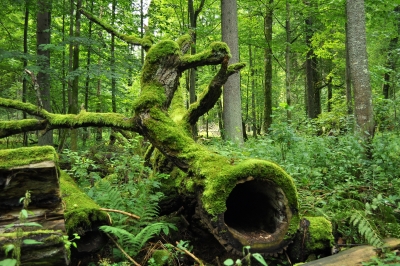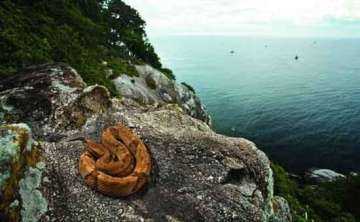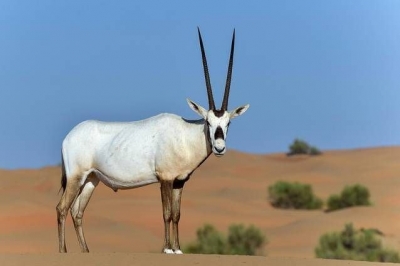What is a Bialowieza Forest ecosystem?

The Bialowieza Forest, running between Poland and Belarus, is most noted for its incredible variety of trees. But logging is threatening not just these age-old trees but also the diverse wildlife dependent on them.
Spanning the two European countries of Poland and Belarus, the Bialowieza Forest is spread across more than 1.400 sq.km. Dominated by primeval (old-growth) forests, the region is of great significance in eco-conservation since it clearly shows on-going natural processes in areas that have remained undisturbed over years. This preserved forest ecosystem is marked by dead wood as much as live wood, with the former helping many species of fungus and insects (and, in turn, birds) live. The forest was declared a UNESCO World Heritage Site in 1979, and one of the few cross-country sites in the world. The Bialowieza National Park in Poland is part of the forest. The primary forest is home to broad-leaved trees in addition to vasular plants such as conifers, and supports a variety of wildlife. However, over the last few years, conservationists have been worried about human interference that could possibly ruin the region. This includes logging too.
Wildlife
The forest is home to more than 50 mammal species, 250 bird species, and several reptile and invertebrate species. In addition to the European bison, the mammals in the region include beavers, moose, lynx, wolves, stags, deer, boars, otters, and elk. Among the birds that can be spotted here are woodpeckers, eagles, owls, flycatchers, warblers, tree-creepers, black birds, tits, nuthatches, starlings, wrynecks, pigeons, wrens, robins, buzzards, and hawks.
Threats
According to the International Union for Conservation of Nature, the conservation outlook for the forest in the latest assessment cycle (2020) has been that of "significant concern". It is said that the forest intitially comprised two national parks. However, about eight years ago, more areas were brought under the UNESCO site, and this brought about management issues because at least three forest management districts entered the picture. Further, within just two years of this expansion, logging activity increased in the forest By 2018, logging was halted through a court ruling. But there are concerns because thefelling of trees impacts creatures dependent on them, both directly and indirectly. This could lead to loss of habitat, species, and eventually biodiversity.
Because of the absence of an integrated boundary, which will make management easier, the forest is likely to be subjected to different kinds of approaches depending upon the governments ruling the respective countries. And this is not good news for the region since continuity and focussed methods are crucial for the upkeep and protection of any natural habitat.
Further, Bialowieza, just like almost all regions of the world, is threatened by climate change. This again means potential crises related to water and weather conditions in the region, in addition to crisis for wildlife themselves. Another potential area of concern is a type of swine fever affecting the wild boar population of the region. Their population is already threatened by human hunting.
Picture Credit : Google

